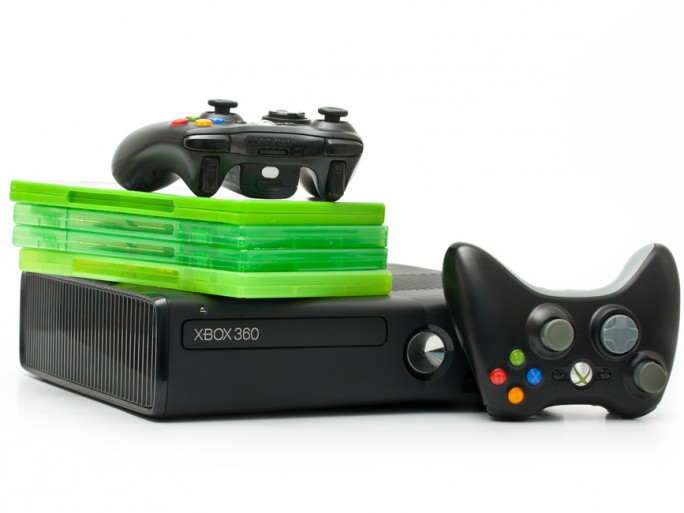Tales In Tech History: The Xbox & Microsoft’s Big Gaming Adventure

In November 2001 Microsoft introduced its Xbox console which, despite some hiccups, remains the main competitor to Sony’s PlayStation
Microsoft raised a few eyebrows sixteen years ago when it decided it wanted to gain a piece of the lucrative gaming market.
In November 2001 it introduced its Xbox console, a name reportedly derived from a contraction of DirectX Box, a reference to Microsoft’s graphics API, DirectX.
Over the years the Xbox expanded beyond just being a simple gaming hardware box to include applications (i.e. games) and streaming services. There is now also an online service known as Xbox Live that allows for high-definition streaming of movies, TV shows, sporting events and even music.
Gaming Foray
Entering the console arena was a bold move for Redmond, and was yet another one of its hardware forays (anyone remember the Microsoft Mouse?)
At the time Microsoft was going up against established rivals, including Sega and Nintendo, and not forgetting the resident goliath that was Sony with its PlayStation console.
Microsoft did have a certain amount of gaming experience before it launched the Xbox, thanks to gaming on the PC. But it had no experience of the console arena, and in 2001 many people were sceptical that the big Xbox device that used standard desktop PC components would ever pose a challenge to the likes of the mighty PlayStation.
What the new arrival needed was a ‘must-have’ game, and thankfully for Microsoft it had just the thing up its sleeve, namely Halo (or Halo: Combat Evolved to give the game its full title).
Microsoft managed to secure this game as its launch title thanks to the acquisition of Bungie (which it later spun off in 2007 but kept ownership of the Halo franchise). British studio Rare was also snared by Microsoft’s deep pockets having previously developed Goldeneye and Banjo-Kazooie for the Nintendo 64. Microsoft acquired Minecraft through its huge takeover of Mojang, but that came much later.
By 2006, Microsoft had sold a respectable 24 million units of the original console thanks to the release of games such as Halo 2, and in 2005 it launched the successor console (the Xbox 360), which by 2013 had sold over 77.2 million consoles around the world.
The Xbox 360 was succeeded by the Xbox One (released in May 2013) and by January this year it had sold 26 million units, compared to the 55 million units sold of its chief rival, the Sony PS4.
Solid Innovation
Xbox devices always tended to be slightly more expensive than Sony’s offerings, but they also benefited from a service launched very early in its life.
In 2002 Microsoft offered its console users Xbox Live to tap into the increasingly popular online gaming market. Along with being able to connect with friends (and indeed strangers), Xbox Live allowed users to download new content and take multiplayer interaction to a new level.
It was another brave move from Microsoft. At the time broadband connections were not a commodity and only for the select few, and rival services such as Sega’s Dreamcast had not done well.
The original Xbox had mostly relied on popular options such as its integrated hard disk drive, support for Dolby audio in actual gameplay, and the ability to rip CDs to create custom soundtracks.
But when the Xbox 360 arrived, it cemented Microsoft’s position in the gaming market thanks to its heavy focus on Xbox Live.
Critics argue that the Xbox 3060 was helped by Sony having to delay the arrival of the PS3 (for a year) by the need to integrate a Blu-Ray drive. Microsoft had backed the rival HD technology and had offered the Xbox 360 HD DVD Player as an accessory for the Xbox 360 console.
But that didn’t deter Microsoft and it continued to push the bar. In 2010 for example it launched the Kinect (Project Natal) in an effort to expand the use of the console beyond the usual game players and change the way players interacted with their consoles.
Kinect is a motion and voice-sensor system that allows users to control and interact with their console (or indeed PC) without the need for a game controller, via a much more natural user interface namely gestures and spoken commands.
This opened the Xbox to different genres of games such as dancing games (where the player has to mimic dances moves shown on screen for example), which again proved to be hugely popular.
The arrival of Kinect also left its competition scrambling to catch up and launch their own motion detecting devices.
Despite the occasional hiccup such as the “Red Ring of Death” with the Xbox 360 (the console would suffer a fatal error and give owners a red ring of light around the console’s power button), a problem which forced Redmond to repair and replace countless systems at a great cost, the device continues to perform well for Microsoft and the Xbox remains the main competitor to the Sony PlayStation.
Not bad for a company that specialises in software.